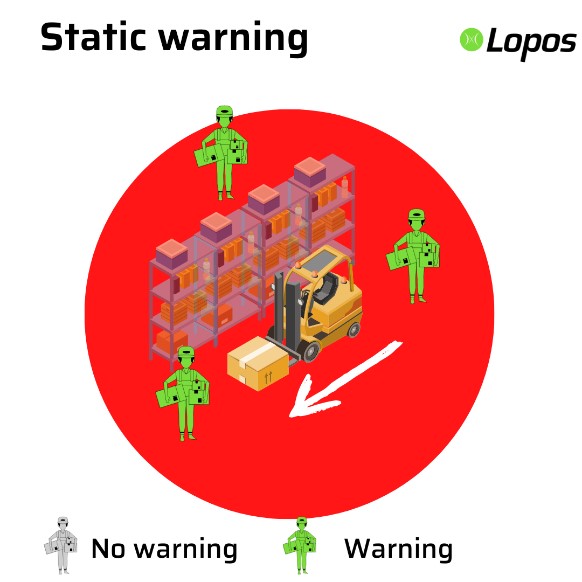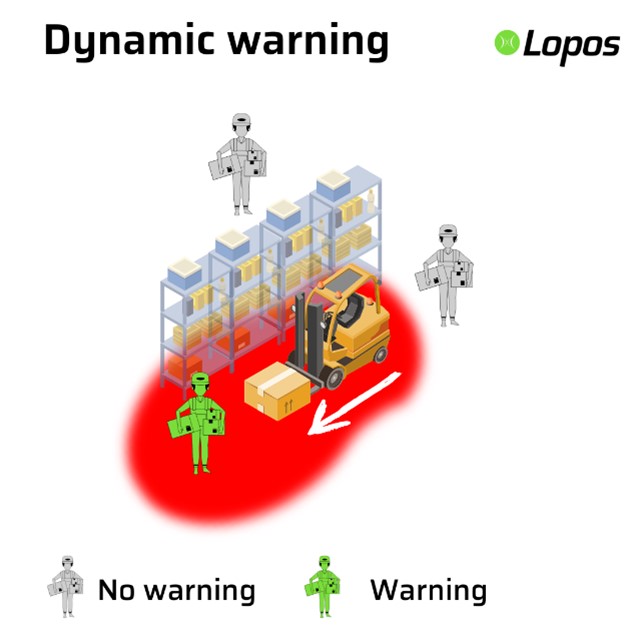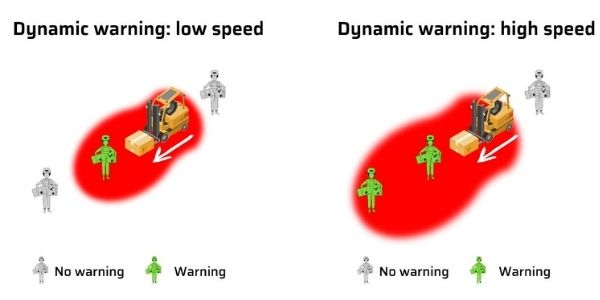DYNAMIC WARNING
Safety while avoiding unnecessary alerts with dynamic warning
Published on January 7, 2022
Published on January 7, 2022
Written by Bart Jooris, CTO at Lopos
One of the features that makes the LoposAlert solution unique is the dynamic warning capabilities of the beacon which is installed on, for instance, the forklift. With this feature we are able to minimize false warnings resulting in an environment where employees are happy to have the LoposAlert solution.
Dynamic warning means that the warning range of the beacon that’s installed, for instance, on a forklift expands in the direction that the operator drives. Moreover, the greater the speed of the vehicle, the further the warning range extends. By doing so LoposAlert also takes the braking distance into account, resulting in more time for the operator to slow down or change direction.

The balance between having a warning area that is big enough to account for braking distance at high speeds and avoiding false alerts as much as possible is challenging.
Having a circular warning area with a fixed range centred on the vehicle and measured from the beacon, would imply a lot of false positives when the device is standing still or moving slowly.
Depending on the layout of the warehouse a circular warning area with a big radius could also trigger false positives in neighbouring racks, as you can see in the image.
 That’s why we developed dynamic warnings. Thanks to our blindingly fast range measurements – up to 500 measurements per second – one beacon can track all close by beacons and wearables up to 30m or 100ft in real time and derive precise braking distances per device.
That’s why we developed dynamic warnings. Thanks to our blindingly fast range measurements – up to 500 measurements per second – one beacon can track all close by beacons and wearables up to 30m or 100ft in real time and derive precise braking distances per device.
Our dynamic ranging then starts from a circular warning area, the minimum range to cover the vehicle itself when standing still. Using the on-device measurements, this area will, consequently, be transformed dynamically to include the changing braking distance and only in the direction where the vehicle is driving. The greater the speed of the forklift, the greater the warning range, minimizing false warnings while accounting for sufficient braking distance.

Implementing high-speed ultra-wideband (UWB) ranging on our 33g (1,2 ounces) wearables and having a one-week battery life requires extreme efficiency at the hardware and firmware levels. This in combination with the configurability of our devices makes our solution unique.
Hard work, a great team, our patented communication stack, and 8 years of experience have made this amazing feature possible.
PS: At Lopos we call our dynamic warning shape the “potato shape”, if you’re reading this and you can think of a better name, let us know :).